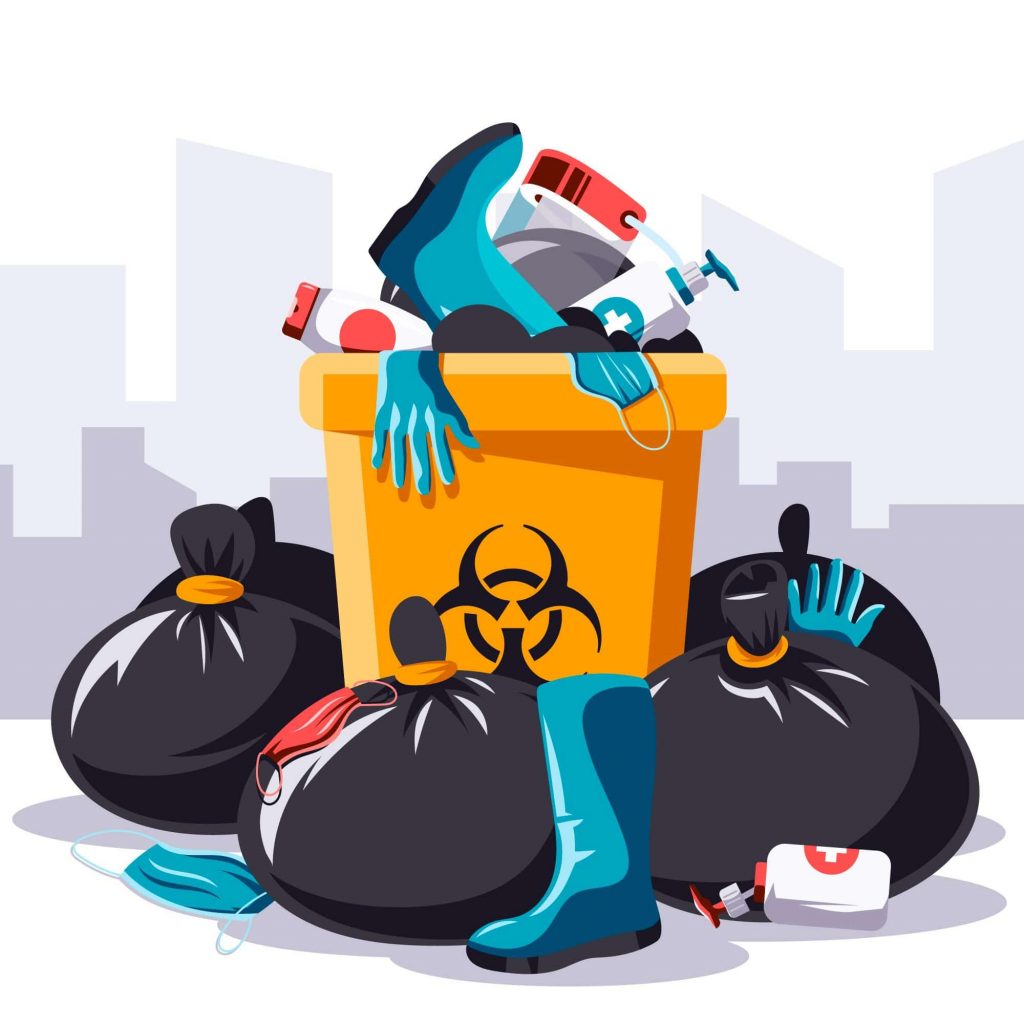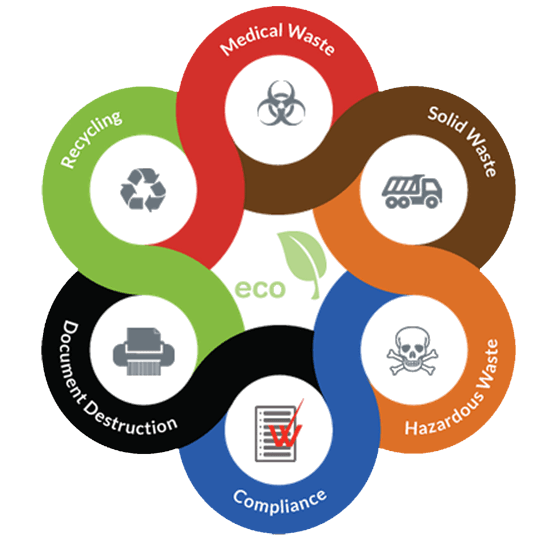Expert Medical Waste Disposal Service: Safeguarding Your Center and Neighborhood
Wiki Article
Best Practices for Medical Waste Management
Medical waste monitoring is a critical element of healthcare facilities' operations to guarantee the security of individuals, team, and the setting. Implementing finest methods in medical waste administration is necessary to decrease the threats linked with hazardous waste. This includes proper segregation and categorization of waste, ensuring its safe storage space and labeling, sticking to governing standards, and making use of reliable disposal methods. By following these finest techniques, medical care centers can minimize the capacity for infections, injuries, and contamination brought on by incorrect handling and disposal of medical waste. This intro aims to provide a review of the importance of finest techniques for medical waste monitoring and the subsequent areas will certainly dig into each practice in information.Segregation and Categorization
In the area of medical waste monitoring, appropriate partition and categorization are essential methods for guaranteeing the reliable and risk-free disposal of healthcare-related products. Medical waste is created from different resources, consisting of medical facilities, facilities, labs, and various other health care centers. It contains a wide variety of things, such as needles, syringes, bandages, handwear covers, and pharmaceutical waste.Segregation entails the systematic separation of different types of medical waste based on their attributes and prospective dangers. Sharps waste, such as blades and needles, ought to be placed in puncture-resistant containers to prevent injuries and the spread of infectious diseases.
Categorization is the process of classifying medical waste right into various groups based upon its possible dangers. WasteX Medical Waste Disposal. These categories might consist of infectious waste, contaminated materials, pharmaceutical waste, and basic waste. By classifying waste, health care facilities can establish the ideal disposal techniques and guarantee compliance with neighborhood regulations and guidelines
Correct partition and categorization of clinical waste not just safeguard the health and safety and security of health care workers and the public yet also add to the general effectiveness and effectiveness of waste monitoring. It decreases the risk of mishaps, lessens environmental influences, and promotes liable waste disposal techniques.
Appropriate Storage and Classifying
To make certain the safe and reliable disposal of medical waste, medical care facilities have to follow correct storage space and labeling practices. Appropriate storage and labeling play an essential duty in maintaining the stability of clinical waste administration systems and shielding the health and wellness and security of medical care workers, individuals, and the public.When it pertains to storage space, it is vital to have actually marked areas particularly developed for various kinds of medical waste. These locations need to be protected, well-ventilated, and furnished with ideal containers that meet regulative criteria. Partition and categorization of waste must additionally be considered to avoid cross-contamination and prospective dangers.
Furthermore, proper labeling is important for efficient waste monitoring. Each container needs to be clearly labeled with the suitable signs, color-coding, and details concerning the waste it has. Tags should consist of details such as the kind of waste, date of collection, and the name of the generator. This makes certain that all individuals managing the waste can quickly determine and manage it properly.
Normal surveillance and evaluation of storage space locations and containers are necessary to identify any type of concerns or infractions. Team must be educated on correct storage space and labeling methods, highlighting the importance of compliance with protocols and policies.
Safe Transport and Handling
Making sure the proper and secure transport and handling of medical waste is important for preserving the integrity of waste monitoring systems and securing the health and wellness and safety and security of all included. Medical waste, that includes items infected with contagious materials, drugs, and other unsafe compounds, should be transferred in a fashion that stops leaks, spills, and possible contamination.It is crucial to use leak-proof and puncture-resistant containers that are especially designed for medical waste. Furthermore, waste needs to be set apart based on its nature and type to avoid cross-contamination.
Throughout transport, it is very important to ensure that waste containers are securely secured and kept in a secure fashion. Vehicles used for carrying clinical waste must be equipped with suitable security functions, such as spill control systems, to lessen the threat of any kind of spills or leakages (medical waste removal service). Drivers should receive training on proper handling and emergency response procedures to effectively address any kind of unpredicted incidents
Furthermore, the transportation and handling of medical waste need to follow all pertinent guidelines and guidelines set forth by regional, state, and federal authorities. Normal assessments and audits must be carried out to evaluate compliance and recognize any kind of areas for improvement.

Compliance With Regulatory Standards
Keeping compliance with regulatory standards is crucial for efficient medical waste monitoring. These guidelines are established to shield public wellness and the atmosphere by guaranteeing that clinical waste is appropriately dealt with, treated, and disposed of. medical waste removal service. Conformity with regulative standards assists to prevent the spread of transmittable illness, minimize prospective risks, and lower the general influence of clinical waste on the atmosphereTo achieve compliance, healthcare centers should stay educated regarding the particular policies controling medical waste management in their jurisdiction. These laws may differ from country to nation, and also within different states or areas. It is necessary for health care facilities to have a comprehensive understanding of these standards and to implement suitable approaches and protocols to make certain compliance.
her latest blog One secret facet of compliance is the appropriate partition and labeling of various types of medical waste. This consists of dividing sharps from other waste, as well as categorizing waste based upon its possible risks. Health care centers have to also make sure that clinical waste is saved in appropriate containers and that these containers are effectively classified and secured.
Additionally, compliance with regulative standards calls for medical care centers to develop proper training and education programs for team member associated with medical waste management - WasteX Medical Waste Disposal. This includes offering training on waste segregation, dealing with, and disposal procedures, as well as the proper usage of individual safety devices
Routine monitoring and audits are also necessary to guarantee ongoing conformity with governing standards. This includes conducting routine assessments of waste storage areas, recording waste monitoring procedures, and maintaining documents of garbage disposal.
Efficient Disposal Methods
Medical care centers should employ effective disposal approaches for appropriate management of clinical waste - WasteX Medical Waste Disposal. Improper disposal of clinical waste can position significant health and wellness and environmental threats. There are several approaches that can be made use of to effectively take care of clinical waste, ensuring the safety and security of health care employees, clients, and the publicOne commonly made use of method is incineration. Incinerators can securely burn clinical waste at heats, lowering the volume and damaging any possibly hazardous virus. Incineration can be pricey and may release dangerous pollutants into the air if not appropriately managed.
An additional technique is autoclaving, which entails subjecting the waste to high-pressure steam. This procedure kills germs, infections, and various other bacteria, providing the waste safe for disposal in routine waste streams. Autoclaving is a effective and ecologically pleasant approach, but it needs customized equipment and qualified employees.
Chemical sanitation is also utilized in some instances, where liquid chemicals are applied to the waste to sanitize it. This approach is much less commonly used because of worries concerning the effectiveness of chemical disinfection and the capacity for chemical deposits to infect the setting.
In addition to these methods, health care centers must also execute appropriate partition, product packaging, and labeling of clinical waste to guarantee its safe handling and disposal. Routine training and education of team on proper waste administration methods are crucial to preserving efficient disposal techniques.
Final Thought

Medical waste administration is a critical facet of health care facilities' procedures to make sure the safety of patients, personnel, and the setting. Applying best methods in clinical waste management is crucial to reduce the risks associated with hazardous waste. These groups might consist of transmittable waste, dangerous waste, pharmaceutical waste, and basic waste.In conclusion, carrying out ideal methods for medical waste management is important for ensuring the safety and security of medical care workers, individuals, and the atmosphere. By correctly classifying and setting apart waste, storing and identifying it properly, making sure secure transport and handling, abiding with regulatory guidelines, and employing effective disposal techniques, medical care centers can properly take care of and lessen the dangers connected with medical waste.
Report this wiki page